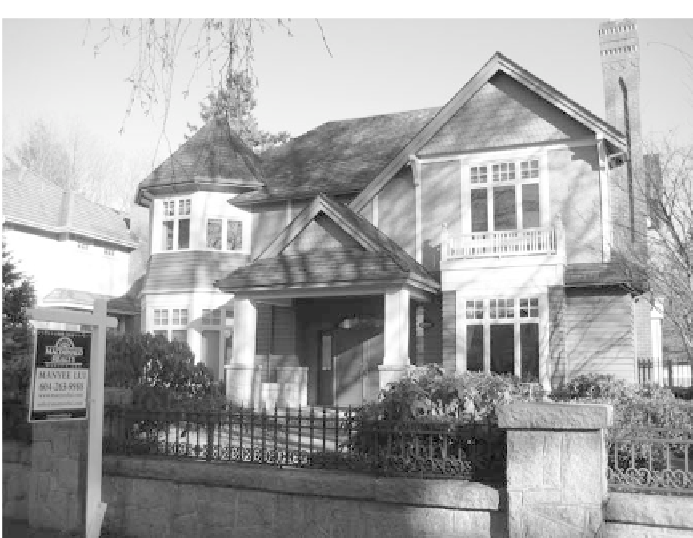Geography Reference
In-Depth Information
Figure 6.4
The compromise landscape: a large new house with revival elements including gables,
turret, cedar shakes, ornate brick chimney, wood mouldings and stone wall, marketed by Manyee Lui
Multicultural Conclusion: A Compromise in Shaughnessy
Of course, an appeal to multiculturalism re-opens the question of white
privilege embedded within the structures of state and society. The arbiter of
the impasse at the public hearing was the City of Vancouver, which now
had to find some other model for conflict resolution. Discussion moved
behind closed doors, away from media amplification, with a committee
composed of members of SHPOA but also including delegates from the
South Shaughnessy Property Owners' Rights Committee and representa-
tives of the property industry, with planning staff to facilitate and mediate.
The decision model became one of multicultural inclusion.
After six months of committee work and deeper mutual understanding
among stakeholders, a compromise was reached. There would be a modest
reduction in the permitted size of new houses, but this could be exceeded
through a floor space bonus if the design of the new property matched a
limited palette of alternatives drawn from existing older house styles in the
neighbourhood (Figure 6.4). So contractors could continue to build large
houses, and purchasers to buy them, but they would receive a size bonus





























